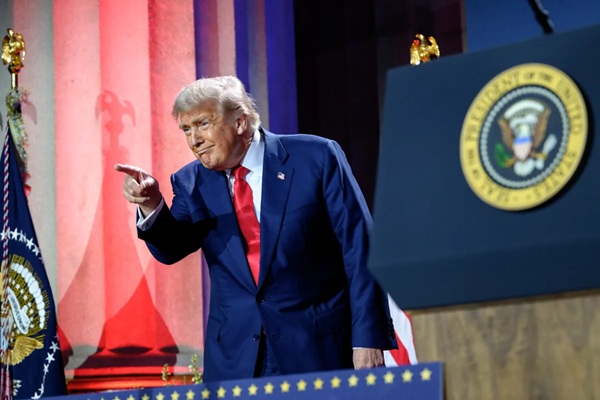.png)
Fed Vs RBI: How They Differ in Monetary Policy, Rates, Inflation Targeting
Inside the Fed and RBI: Why Two Central Banks See Inflation and Growth Differently


By Babuji K
Babuji K is a career central banker with 35 years at RBI in exchange rate management, reserve operations, supervision, and training.
October 11, 2025 at 4:44 AM IST
The Federal Reserve and the Reserve Bank of India anchor two of the world’s most influential monetary systems. Both mainly pursue price stability, yet their mandates, decision-making frameworks, and market tools diverge sharply. While the Fed balances inflation with employment in a market-driven economy, the RBI operates a hybrid model of balancing inflation with growth. Their paths highlight how central banking remains a local craft practised under global scrutiny.
The Federal Reserve’s birth in 1913 followed repeated financial panics that exposed the fragility of America’s banking system. It became both lender of last resort and architect of monetary stability. The term “FED” refers to the Federal Reserve System, the central banking system of the United States. It comprises the Board of Governors, twelve regional Reserve Banks, and the FOMC (Federal Open Market Committee). The Board of Governors and Regional Heads regulate banks, manage liquidity, and serve as the fiscal agent to the US Treasury whereas FOMC dictates monetary policy.
The Reserve Bank of India arrived two decades later, in 1934, as a colonial creation and was nationalised after independence in 1949. For decades, its policy orientation was developmental and discretionary. A profound structural change came only in 2016, when the Monetary Policy Committee was established and inflation targeting was formalised at 4%, with a tolerance band of 2–6%. This institutionalised rule-based decision-making aligned India’s monetary framework with international best practice.
Decision Frameworks
India’s six-member Monetary Policy Committee reflects a different philosophy. It splits authority evenly between insiders and independent experts. The RBI Governor chairs it, alongside the Deputy Governor and one senior bank official, usually the Executive Director of the Monetary Policy Department. Three external members, nominated by the government for fixed four-year terms, add professional diversity and public accountability. When opinions diverge, the Governor’s casting vote ensures closure without paralysis.
The FOMC embodies institutional continuity, the MPC, pluralism and periodic renewal.
Mandates and markets
The Federal Reserve operates under a dual objective: price stability and maximum employment. This flexibility allows it to weigh inflation and labour conditions simultaneously.
India’s MPC follows a hierarchical approach in which inflation control, by statue, takes precedence, leaving growth as a derivative goal. Breaching the target band for three consecutive quarters requires the RBI to formally explain to the government, an explicit accountability mechanism absent in the US model.
Their toolkits mirror the structural differences in their financial systems.
The Fed’s market-based approach relies on influencing the federal funds rate through interest on reserves, open-market operations, and a web of standing repo and reverse-repo facilities. It also uses forward guidance and the “dot plot” to anchor expectations in deep, liquid markets.
The RBI operates within a bank-dominated system. In September 2025, RBI after a review retained the weighted average call rate as the operating target and aims to align the call money rate closely with the policy repo rate to ensure effective monetary policy transmission and maintain optimal liquidity. Thus, the policy repo rate anchors short-term rates, flanked by the Standing Deposit Facility and the Marginal Standing Facility that create the operating corridor. Quantitative instruments—the Cash Reserve Ratio and Statutory Liquidity Ratio—allow direct control over liquidity and credit creation. The RBI’s hybrid framework of price and quantity tools compensates for uneven transmission across sectors and regions. Liquidity management is not within the MPC's remit but is handled by the RBI.
A major distinction lies in foreign exchange operations. India’s managed-float regime makes FX intervention integral to liquidity management. The Fed, backed by a global reserve currency, does not face this constraint.
Both institutions communicate with increasing transparency with accompanying statements about interest rate decisions. The FOMC meets eight times a year and publishes minutes with a 21-day lag; the MPC meets six times and releases minutes after 14 days. Policy statements are now detailed, with voting patterns, data-driven and forward-looking economic assessments—an evolution that has narrowed the communication style between the two systems.
Contrasting Cycles
After two years of aggressive tightening, the Federal Reserve entered 2025 seeking a soft landing. It trimmed rates modestly in December 2024 and paused soon after as inflation remained above its 2% target. The Reserve Bank of India, facing subdued inflation and a favourable monsoon, began an easing cycle in February 2025. A total of 100 basis points in cuts brought the repo rate to 5.5% by June, as growth forecasts rose to 6.8% and inflation projections approached 3%. By August, the RBI paused to gauge the impact. In October, with rates and stance remaining unchanged, the central bank shifted strategic focus to more significant developmental and regulatory policy measures.
While the Fed hesitated, wary of reigniting inflation, the RBI leaned into accommodation. The difference underscored institutional priorities, credibility management in the US versus growth stabilisation in India. It also reflected divergent fiscal contexts: while the U.S. continued to run large deficits financed at higher rates, India’s fiscal consolidation created space for monetary easing.
Philosophy, Practice
The RBI, in contrast, must balance its inflation mandate with the realities of a still-developing financial system. Liquidity management remains an art of calibration, not delegation. Its transmission mechanism relies primarily on the banking system rather than capital markets, making liquidity control more direct but also more labour-intensive.
Transparency has evolved into a central-banking instrument of its own. The Fed’s press conferences, projections, and dot plots set a global benchmark for signalling. The RBI has refined its post-policy statements into forward-looking narratives that blend forecasts with regulatory intent, often the guidance Indian markets receive on the central bank’s evolving view of the economy. Both have moved toward data-rich communication, recognising that predictability strengthens rather than weakens monetary authority.
In the end, both institutions exemplify how central banking remains as much art as science. The Fed’s model suits a mature economy with deep capital markets. The RBI’s hybrid framework reflects a bank-centred system where liquidity management still underpins credibility. What unites them is the constant tension between rules and judgment, data and discretion.
Sound monetary policy, as both demonstrate, is not about symmetry but about fit, each central bank crafting its strategy around its economy’s structure, credibility, and stage of evolution.
BasisPoint Briefing — Explainers from seasoned practitioners for readers who want more than the basics.



